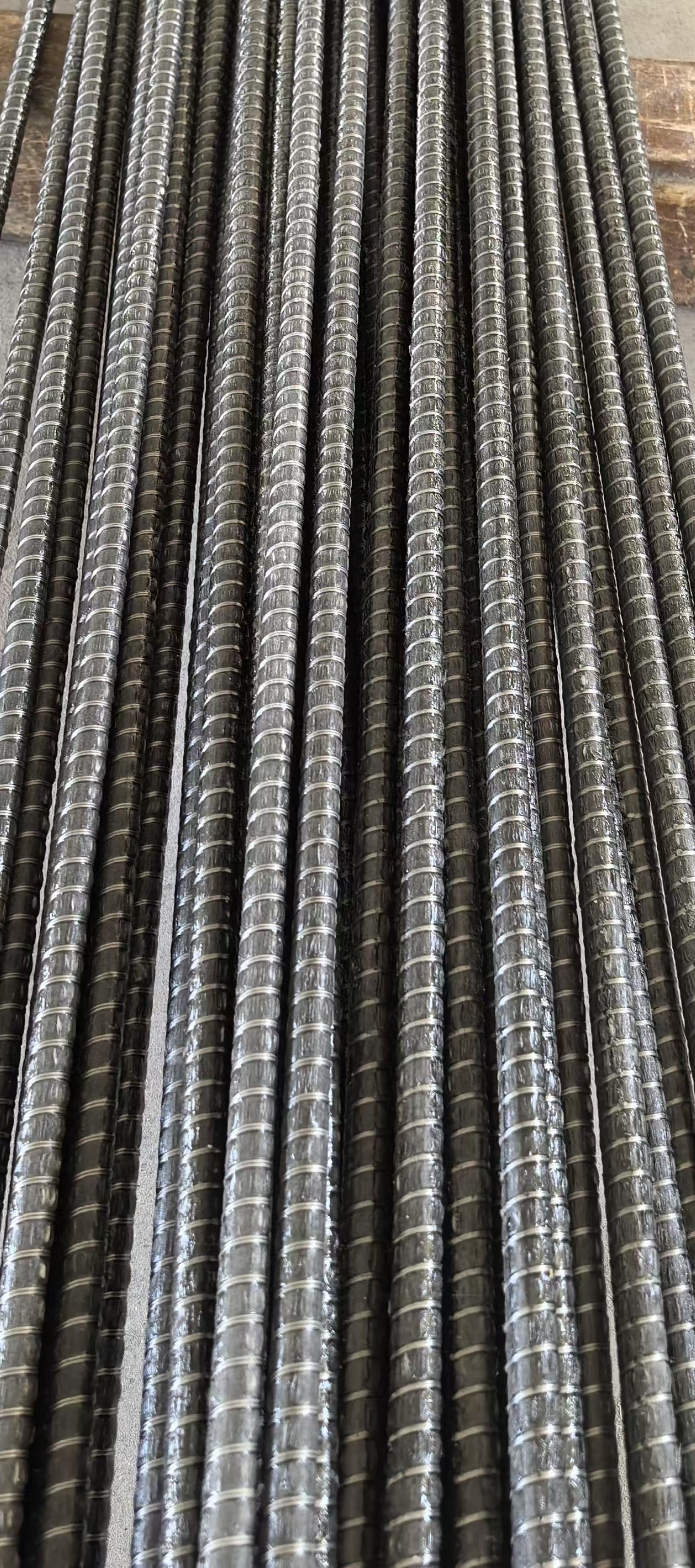Overview
Glass Fiber Reinforced Rebar (GFRP Rebar) is a non-metallic reinforcement material designed to replace traditional steel rebar in concrete structures, offering superior resistance to corrosion and magnetic neutrality. Composed of continuous E-glass or S-glass fibers embedded in a polymer matrix (usually vinyl ester or epoxy), the rebar is produced via pultrusion, creating a uniform, high-strength composite with helical ribs for optimal bond with concrete.
Available in diameters from 6mm to 50mm, matching standard steel rebar sizes, GFRP rebar has a tensile strength of 600-800 MPa—comparable to high-strength steel—while weighing just 25% of steel. Its non-magnetic properties and electrical insulation (volume resistivity >10^12 Ω·cm) make it ideal for sensitive environments. The ribbed surface provides a bond strength of 8-12 MPa, ensuring effective load transfer to the concrete matrix.
Features
Corrosion Immunity: Unlike steel, GFRP rebar does not rust, even in chloride-rich environments (e.g., coastal areas, de-iced roads) or alkaline concrete, extending structure lifespan by 50% or more.
Magnetic & Electrical Neutrality: Non-conductive and non-magnetic, it eliminates electromagnetic interference, making it suitable for hospitals, data centers, and transit systems with magnetic levitation technology.
Thermal Compatibility: With a coefficient of thermal expansion (CTE) of 10-12 x 10^-6/°C, closely matching concrete (12 x 10^-6/°C), it minimizes thermal stress and cracking in composite structures.
Ease of Handling: The lightweight nature reduces transportation costs and labor effort, with installation speed 30% faster than steel rebar due to lower weight and cutting ease with abrasive saws.
Fire Resistance: When formulated with fire-retardant resins, GFRP rebar meets ASTM E119 fire ratings for structural integrity up to 500°C for 60 minutes, suitable for high-rise buildings and tunnels.
Applications
Marine Structures: Bridges, piers, and seawalls exposed to saltwater, where steel rebar corrosion is a critical issue.
Transportation Infrastructure: Concrete railway sleepers, metro tunnels, and airport runways, reducing maintenance costs in harsh climates.
Industrial Buildings: Floors and foundations in chemical plants or battery storage facilities, protecting against acid spills and electrochemical corrosion.
Electromagnetic Sensitive Areas: Reinforcement for MRI rooms, power substations, and communication towers to prevent signal interference.
FAQ
Q: Does GFRP Rebar require special concrete mix designs?
A: No, standard concrete mixes can be used. However, ensuring proper cover thickness (minimum 30mm) and compaction is recommended to maximize bond strength.
Q: How is its tensile strength affected by temperature?
A: Tensile strength remains above 80% of nominal value at 60°C and 60% at 100°C. For permanent high-temperature applications, consult the manufacturer for specialized formulations.
Q: Can it be bent on-site like steel rebar?
A: Yes, using hydraulic benders with minimum bend radii of 6-8 times the bar diameter (depending on size) to avoid fiber damage. Excessive bending may reduce tensile capacity.
Q: What is the cost comparison to steel rebar?
A: Initial costs are 2-3 times higher than steel, but lifecycle costs are lower due to reduced maintenance and extended service life, especially in corrosive environments.














